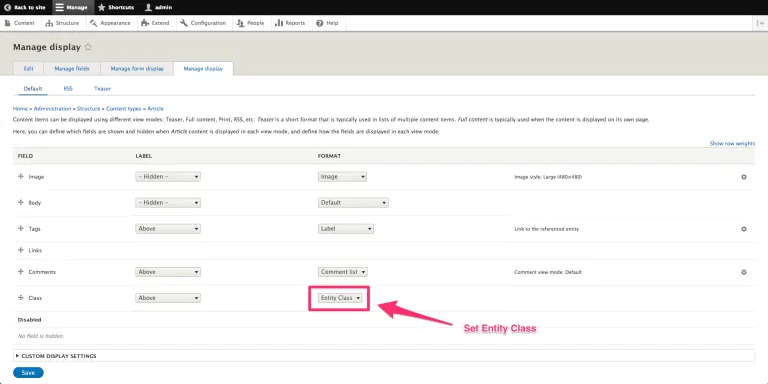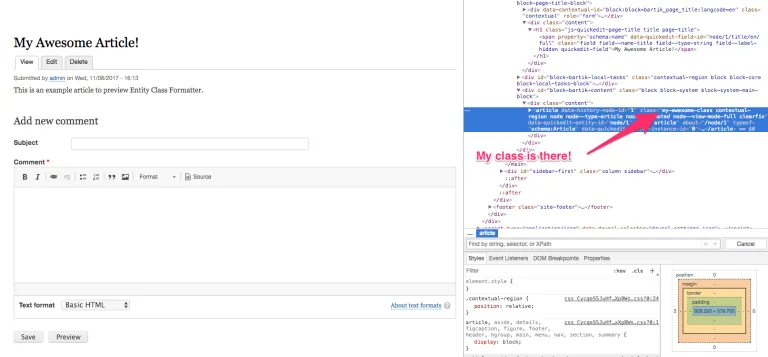The Entity Class Formatter is a nifty little module which allows editors to place classes on to entities, allowing their look and feel to be altered in the theme layer or with other modules such as Look and Modifiers. It is now available for Drupal 8.
Entity Class Modifier is a humble little module, however, it does open up a lot of possibilities. The most obvious is to use the theme layer to provide styles for the class which has been applied. This makes it possible for the “designer” at design time to can some different styles to pick from. It is however, possible to use the module in a more flexible way and combine it with Modifiers and Looks.
Once a class has been defined and added to a field, a “Look Mapping” can be defined, associating the class with a set of Modifiers. The site builder or skilled editor can then go in and define any number of Modifiers which will be fired with the class.
For example - a “my-awesome-class” class could be created which is wired into a “field_my_awesome” set of Modifiers. The Modifiers could include a blue linear gradient with white text overlay with generous padding. All of this configuration happens in the UI after deploy. It is a very flexible and powerful system. The system can be configured after deployment and adapted to the styles you wish to apply.
Basic use of Entity Class Formatter
The use of the module is very easy. We can for example define our own class on the article.
The first thing we need to do is to enable the module. Once installation is complete we can go and add our custom field. In this little tutorial we will basically add the class onto the article content type. So go to Structure > Content types > Article > Manage fields and add new text field. We can name the field simply "Class" and save it. As we keep everything in default we can save it on the next page too.

Now the last thing we need to do to make it work is set the Entity Class on the field in Manage display page. Go to Structure > Content types > Article > Manage display and change the format to "Entity Class". There's no need to any other manipulation with field because it won't render any values which would be visible to the visitor of the page.

That's it! No we can go to create an article (Content > Add content > Article). Input class to our field...

... voila, class is there!

Similar but different
There are a couple of modules out there which are similar but are different enough for them not to be totally suited to our requirements.
Classy Paragraphs, available in Drupal 8, has been influential in the Paragraphs ecosystem and has opened the way for creative designs. It was intended to apply to Paragraphs only and is quite structured in the way classes are applied through a custom field type. The Entity Class Formatter module is more flexible in that it has been designed to apply to all entity types. It can also handle a variety of field types (text, select lists, entity references) and is able to adapt to the data at hand. So, Entity Class Formatter has a similar aim - it is just somewhat more generic.
Field Formatter CSS Class, available in Drupal 7, also uses a field formatter approach to applying the class to the entity. It does have more complexity than this module because it deals with several layers of nesting. The Entity Class Formatter is very simple and only applies to the parent entity of the field.


